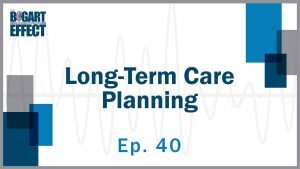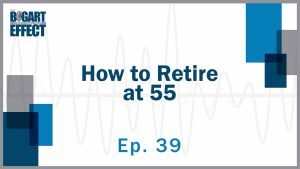Planning for your retirement is an ongoing process that needs careful thought and regular evaluation. This article will guide you through the intricacies of the retirement planning timeline, ensuring you make informed decisions at each stage.
We’ll start by understanding various retirement rules such as pension laws, tax considerations, and 401(k) plan regulations. Next, we delve into different investment options, including traditional IRA investments, Roth IRA benefits, and employer-sponsored plans like 401(k).
The next part of our journey on this retirement planning timeline involves running your numbers to create a comprehensive plan. We’ll assess potential income sources in retirement while estimating future expenses post-retirement.
You’ll also learn about contribution evaluation and optimization strategies, particularly if you’re over age 50. Lastly, we explore how an advisor can play a crucial role in your retirement planning process along with making choices about Medicare during your golden years.
Understanding Retirement Rules
The first step in planning for a secure retirement is understanding the rules that govern your savings. Get ready to dive into the exciting world of pension laws, 401k regulations, and tax advantages for retirees. It’s like a retirement party but with rules.
Pension Laws: The Good, the Bad, and the Retirement
Pension laws vary by state and can significantly impact your retirement savings. Make sure you know the eligibility requirements, contribution limits, and withdrawal penalties.
It’s like knowing the secret handshake to unlock your pension benefits. Please refer to The Department of Labor’s website for more details on eligibility requirements, contribution limits, and withdrawal penalties.
Tax Considerations: The Taxman Cometh, Even in Retirement
Taxes are like annoying relatives who always show up uninvited – even during retirement. Understand how taxes affect your income sources, like Social Security benefits and IRA distributions. The IRS has a handy guide called Publication 915 to help you navigate this tax maze.
401(k) Plan Rules: The Ultimate Retirement Savings Game
401(k) plans are like the MVPs of retirement savings, with their tax advantages and employer-matching contributions. But beware of the rules.
There are limits on contributions, penalties for early withdrawals, and required minimum distributions. The Social Security Administration’s official site has all the juicy details.
So, get your retirement party hat on and dive into the world of pension laws, tax considerations, and 401(k) plan rules. It’s time to make informed decisions and secure those golden years.
Evaluating Investment Options
Planning for retirement can feel like navigating a labyrinth. Choose wisely to optimize growth and minimize risk exposure.
Pros and Cons of Traditional IRA Investments
A Traditional Individual Retirement Account (IRA) lets you make pre-tax contributions. Money grows tax-deferred until withdrawal when it’s taxed as ordinary income.
- Pros: Tax-deductible contributions; No income limits for participation.
- Cons: Required minimum distributions after age 72; Withdrawals subject to taxation.
Benefits of Roth IRA Investments
A Roth IRA offers post-tax benefits. Investments grow tax-free, and qualified withdrawals are completely tax-free too.
- Bonus Points: No required minimum distributions; Qualified withdrawals are not taxed.
Exploring Employer-Sponsored Plans Like A 401(k)
If available through your employer, a 401(k) plan is an excellent tool for building a substantial nest egg over time. Take advantage of high contribution limits and potential employer-matching contributions.
- Tips: Potential employer match boosts saving rate; High annual contribution limit compared to other plans.
Running Your Numbers & Creating A Plan
crunching numbers, estimating expenses, and creating a stress-free strategy for your golden years.
Assessing Income Sources in Retirement
Money, money, money. Retirement income can come from various sources like social security, pensions, annuities, savings, and investments like IRAs and 401(k)s.
Calculate how much you’ll get from each source monthly or annually. The Social Security benefit calculator can help you figure out your payments.
Estimating Future Expenses Post-Retirement
Where’s the money going? Estimate future expenses like housing costs (mortgage or rent), healthcare (hello, Medicare premiums and medical bills), and lifestyle choices (travel, hobbies, and eating out). It’s all about maintaining that quality lifestyle.
- Housing: Own or rent? Mortgage or no mortgage? Plan to downsize? Property taxes? These factors affect your budget planning.
- Healthcare: Medicare doesn’t cover everything. Be ready for medical expenses and medicines that Medicare doesn’t cover.
- Lifestyle choices: Travel, entertainment, and eating out. They’re not necessities, but they contribute to your happiness and well-being. Consider them when calculating future expenses.
Crunching numbers and creating a comprehensive plan ensures a comfortable and stress-free retirement. Balance your incoming funds and outgoing expenses for a financially stable future. Start early, stay consistent, and secure those golden years.
Contribution Evaluation & Optimization
Don’t skimp on your retirement funds. The amount you contribute determines how comfy your golden years will be. Consider age limits and tax benefits before making any decisions. It’s retirement planning, not rocket science.
Additional Contribution Opportunities for Those Aged Above 50
Hey, 50 is the new 30. There are ways to augment retirement funds for those aged 50 and above. The IRS allows catch-up contributions to IRAs and 401(k)s. Extra $6,500 annually on top of the normal cap of $19,500? Cha-ching. Cha-ching.
Pre-Tax vs After-Tax Benefits: The Battle Begins
Pre-tax or after-tax? It’s like choosing between a tax break now or later. With pre-tax contributions, you delay taxes until retirement. It’s like a delayed gratification party. But with after-tax contributions, you’ve already paid taxes upfront. It’s like a tax-free growth fiesta. Choose wisely, grasshopper.
For more juicy details on Roth IRAs, check out this guide. It’s like a treasure map to tax-free riches.
Remember, your choice depends on your circumstances. Seek professional advice if you’re feeling lost. They’re like the Yoda of retirement planning.
The Role of an Advisor in Retirement Planning
Retirement planning can be a complex process but fear not. An advisor is here to save the day. They bring expertise in investment management, tax preparation services, and customized financial planning.
They’ll make your retirement journey smoother than a freshly buttered slide.
Navigating the Complexities of Retirement Savings Plans
An experienced advisor will lead you through the labyrinth of retirement plans, from 401(k)s to IRAs, so that you can find an ideal match for your risk profile, timeline, and financial objectives – like a GPS system for your retirement savings.
An advisor can assist you in selecting the best plan for your situation, considering risk appetite, investment timeframe, and financial objectives. It’s like having a GPS for your retirement savings.
Cash Flow Strategies and Lump Sum Distributions
Advisors aren’t just about saving money but also cash flow wizards. They’ll help you decide between pensions and lump sum distributions, ensuring your post-retirement lifestyle is as smooth as silk. They’re like financial fairy godmothers.
Tailored Financial Advice for Your Unique Needs
Advisors know that one size doesn’t fit all in retirement planning. They’ll provide tailored solutions that take your individual requirements into account. It’s like having a personal stylist for your finances.
Making Choices About Medicare And Portfolio Planning In Retirement
Secure your financial future and health coverage. As we age, healthcare needs increase—key decision: health insurance coverage through Medicare.
Navigating Healthcare Choices Including Medicare During Retirement
Choosing a suitable Medicare plan can be daunting. Compare Original Medicare (Parts A and B) to Medicare Advantage Plans (Part C), taking into account cost-sharing structures, network restrictions, and the need for supplemental policies. Consider cost-sharing structures, network restrictions, and the need for supplemental policies (Medigap).
Healthcare in retirement: think about portfolio management too. Secure a quality lifestyle without financial worries.
Portfolio Management Issues in Retirement
Shift investment strategy in retirement. Focus on preserving capital and generating sustainable income. Consider risk tolerance, asset allocation, and withdrawal rates.
The Role Of An Advisor In Retirement Planning
An experienced financial advisor is invaluable. They provide guidance on managing assets, cash flow strategies, and securing your financial future.
A well-crafted retirement plan addresses healthcare choices and effective portfolio management. Create a worry-free blueprint for life after work.
Contact the Experts at Bogart Wealth for Your Retirement Planning Needs
Understanding retirement rules is crucial for a smooth transition into this new phase of life – because nobody wants to be caught with their 401(k) plans down.
So, let’s break it down: know the pension laws, consider the tax implications, and don’t forget to evaluate those investment options – traditional or Roth IRAs.
And hey, if you’re over 50, you’ve got some extra contribution opportunities to optimize – because who doesn’t want to squeeze every penny out of their retirement savings?
But wait, there’s more! Pre-tax or after-tax contributions? That’s the million-dollar question that can impact your overall savings strategy.
And don’t go it alone – a retirement planning specialist can be your financial fairy godmother, guiding you through the maze of Medicare coverage and portfolio planning.
So, get your retirement planning timeline in order because financial security in retirement is no joke.



